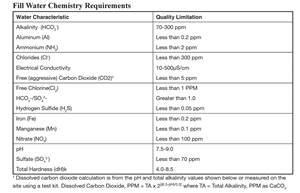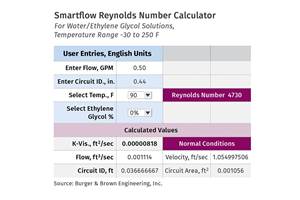Mold-Heating/Cooling Technology Keeps Cosmetic Parts Looking ‘Hot’
New rapid mold-temperature control technology allows molder to eliminate cosmetic defects like knit lines or sink marks in parts that require a glossy finish or feature texturing.
Like being married seven times. With a laugh, that’s how the seven partners who currently run custom injection molder Craftech Corp. describe their business arrangement. Founded as a tool maker in 1979 by John Butler, the current president, Craftech has since expanded into injection molding and assembly. Butler bought out his initial partner in 1982, and in 1986, the core management team, which numbered six at the time, became partners, taking on a seventh partner in 1987, when Craftech formally expanded into molding.
Today, Craftech operates a total of 50 molding machines, ranging in clamp force from 12 to 720 tons, with 34 presses sized from 14 to 700 tons at its headquarters in Anaheim, Calif. Its second operation, located in Tijuana, Mexico, opened in 2009 and expanded in 2013 to a 26,000-ft2 site.
Offering in-mold decorating, insert molding and overmolding, Craftech serves primarily customers in medical, electronics, automotive, and consumer. On the medical side, the ISO 13484 certified molder has two clean rooms, Class 10,000 and Class 100,000. When Plastics Technology visited Craftech in February, the molder was starting work on the second clean room, part of its bid to better serve medical customers, which account for about 15% of its business and are rapidly growing.
THE ‘HOT-COLD’ SOLUTION
About two years ago, the partners saw the need for a new technology to help them with a PC/ABS electronics enclosure display that was suffering from knit lines and sink marks. Painting was an option to improve surface finish, but Pete Weisel, Craftech’s v.p. of business development, said the logistics and lead-time impact of farming out paint work wasn’t appealing. As it researched technologies to improve surface finish, it looked at induction heating for tooling, among others, before opting for the Alternating Temperature Technology (ATT) temperature-control system offered by Single Temperature Controls Inc., Charlotte, N.C., which they refer to internally as “hot-cold.”
The ATT system rapidly switches tools from heated to cooled, achieving temperature swings of more than 210° F, by utilizing two different circuits (hot and cold) and pressurized water for temperatures to 400 F. Run through the tool, the water, in a steam state, heats the mold above the resin’s glass-transition temperature prior to injection. The mold is then rapidly cooled after filling. This helps eliminate cosmetic defects like knit lines or sink marks in parts that require either a glossy finish or feature texturing. In highly filled parts, it results in a resin-rich surface, keeping fibers from migrating to the part’s exterior.
Weisel said he and his partners saw the technology as a chance to add value for customers and provide a simpler, more continuous and cost-effective supply chain by eliminating the logistics and costs of painting. “We told our customer, ‘We can cut the paint out for you guys and turn your parts around quicker,’” Weisel explained. “Hot-cold is a real value-add on these types of enclosures. You’re going from a ‘ho-hum’ shoot-and-ship bezel to a very, very high-quality cosmetic part without a ton of added cost.”
Weisel admits that hot-cold technology initially ran “hot and cold” for them, with what he calls a steep learning curve. Today, however, the Single ATT, positioned between two molding machines and readily plumbed into jobs that need it, has become a selling point. “We’re shopping hot-cold around,” he says. “Weld lines are an inherent a problem in molding, but this allows us to eliminate them. For something with a Class A finish, it makes texture look great and a glossy surface look fantastic.”
Related Content
Improve The Cooling Performance Of Your Molds
Need to figure out your mold-cooling energy requirements for the various polymers you run? What about sizing cooling circuits so they provide adequate cooling capacity? Learn the tricks of the trade here.
Read MoreTroubleshooting Leaky Temperature-Control Units
Learn the causes, symptoms and remedies for TCU leaks to keep these vital contributors to plastics processing up and running longer and more efficiently.
Read MoreCooling Geometry and the Reynolds Calculation
The original Turbulent Flow Rate Calculator worked well with a round circuit diameter, such as a drilled passage, but not as well using hydraulic diameters. Here’s how the problem was fixed.
Read MoreCooling the Feed Throat and Screw: How Much Water Do You Need?
It’s one of the biggest quandaries in extrusion, as there is little or nothing published to give operators some guidance. So let’s try to shed some light on this trial-and-error process.
Read MoreRead Next
Why (and What) You Need to Dry
Other than polyolefins, almost every other polymer exhibits some level of polarity and therefore can absorb a certain amount of moisture from the atmosphere. Here’s a look at some of these materials, and what needs to be done to dry them.
Read MoreHow Polymer Melts in Single-Screw Extruders
Understanding how polymer melts in a single-screw extruder could help you optimize your screw design to eliminate defect-causing solid polymer fragments.
Read MoreLead the Conversation, Change the Conversation
Coverage of single-use plastics can be both misleading and demoralizing. Here are 10 tips for changing the perception of the plastics industry at your company and in your community.
Read More

















.png;maxWidth=300;quality=90)








